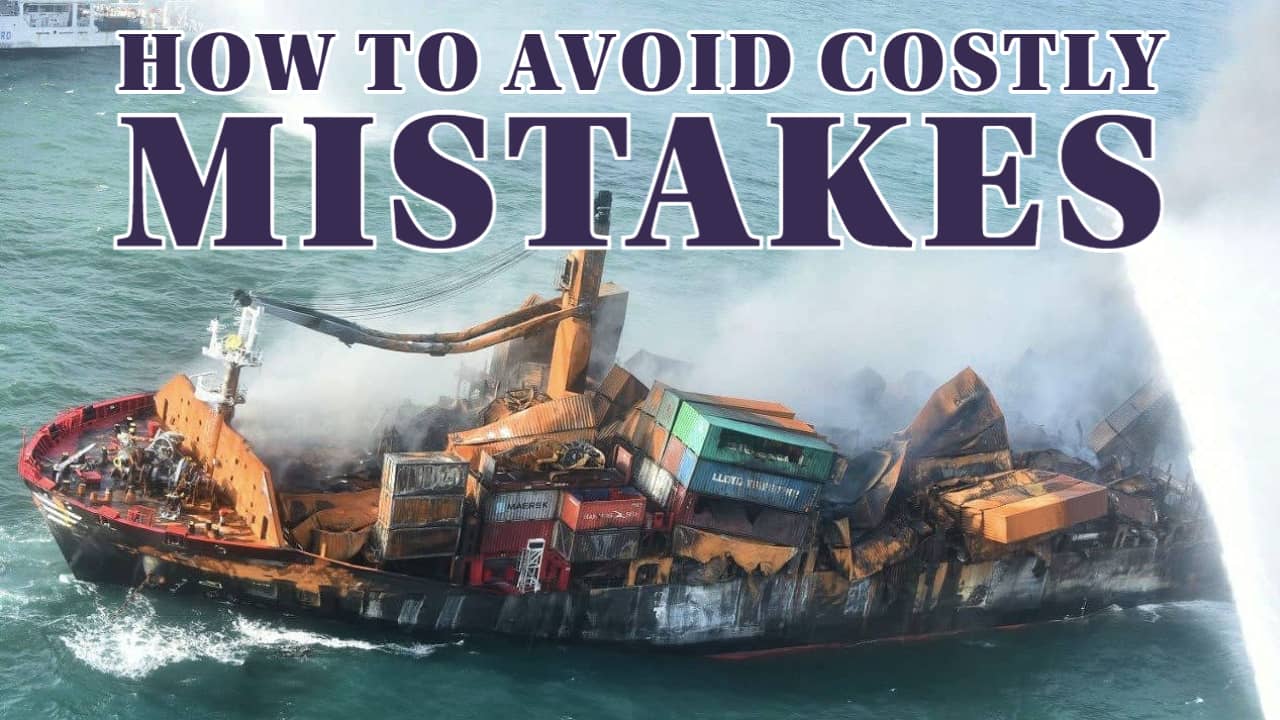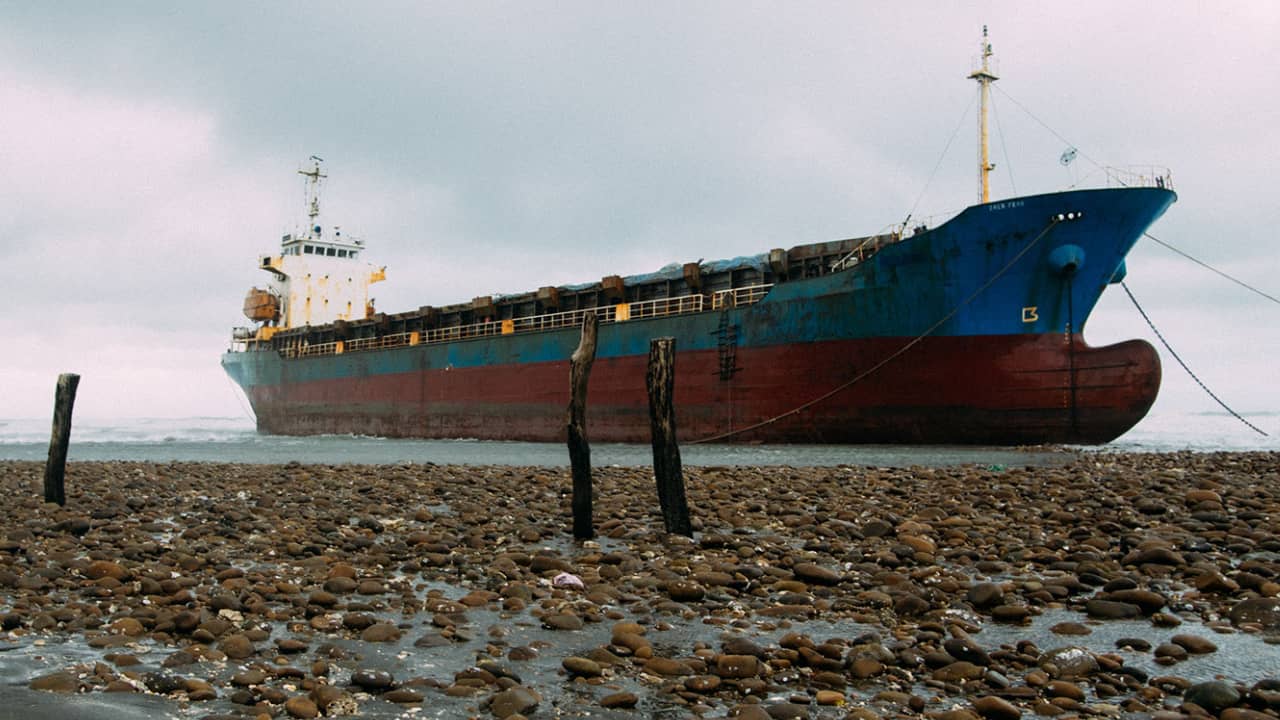
4 Lessons Learnt from Cargo Insurance Claims (Insider Tips!)
5-minute read
Marine insurance claims have never been more topical, not just with shipments being compromised globally through congestion delays but with other one-off incidents hitting the headlines, such as thousands of containers that were stuck on the Ever Given in the Suez Canal and containers having literally gone up in smoke on the X-Press Pearl of Sri Lanka.
Insurance claims routinely run into five- or six-figure sums, which could be crippling for smaller exporters and importers.
Yet do you know enough about the claims process – or take enough care with their insurance precautions – to ensure you are well prepared when a claim has to be made?
In an ideal world, the first steps come when the consignee or cargo owner promptly notifies the loss to the insurance broker, and a surveyor is appointed.
The consignee issues a pro forma claim against the carrier, and shipping documents are sent to the surveyor for review. It is important to lodge a pro forma claim against the carrier and that this occurs as soon as possible.
This process is often overlooked and can limit the prospects of cargo owners (and their insurers) of recovering costs should it later be found that the carrier was responsible for the damage.
It is also very important that all delivery dockets are kept, and any damage is endorsed on these documents to assist with future recovery of costs.
Logically, cargo owners should pursue all claims quickly, but it turns out that some claims are submitted weeks or months after the accident.
One reason appears to be that the party making a claim may be more focused on making a repair or getting replacement goods such as machinery or parts.

So the first lesson to take on board is that the quicker the claim is made, the better it is for the broker, insurer and surveyor to guide the claimant on the process to follow so that no steps are missed.
The second lesson is that it is important to supply the necessary shipping documents, such as bill of lading, commercial invoice and packing list.
These will reveal such details as the Incoterms (the internationally recognised rules which define the responsibilities of sellers and buyers), and who is responsible for paying for and managing the shipment, insurance, documentation, customs clearance and other logistical activities.
It will be helpful if the trader has an understanding of Incoterms such as ex-works, FOB and CIF, and the differences between them. A small trader may not have all of these documents to hand, but their freight forwarder or customs broker can be contacted to assist.
Failure to supply these documents will slow the claims process. The survey of damage may be done by one surveyor or jointly, if other parties to the claim want independent corroboration of the cause and extent of the damage.
Organising the survey may be complicated because the cargo may have been delivered overseas or have been packed overseas for delivery here, or the ship involved in carrying the damaged cargo may have sailed.
When the survey does take place, the surveyor has a number of issues to resolve. The nature of the product has to be determined and how sensitive it is.
Questions arise, such as is the damage physically visible? Is the product actually damaged, or is it just the packaging that is damaged?
This can be a contentious point. Is a bottle of perfume “damaged” if the bottle is fine, but the box is crushed?
The contents may be perfect, but the packaging is part of the buying experience, and therefore the question arises as to whether the whole product is written off or whether it can be salvaged by obtaining new boxes from the maker.
This point is more important than a shipper might think because their marine insurance contract may include a clause imposing upon them the duty to mitigate loss.
While the claimant may be leaning towards a solution of “write the lot off and compensate me in full”, the surveyor may be obliged to point out various mitigation options.
For example, is all of the cargo damaged, or can damaged and undamaged products be separated and some saved?

In some cases, products such as machinery may be able to be repaired and sold, which may recover up to 80% of its “new” price. In the worst case, some money can be achieved by the sale or auction of damaged goods.
All the above might lessen the amount of the claim and ensure the claimant has adhered to the obligations of the insurance contract.
Another helpful approach is considering the environmental effects of dumping damaged cargo wholesale. For example, if any items can be reused, even a small amount, it means avoiding up to 67 cubic metres of product from a 40ft container ending up in a landfill.
There remains the question of how the damage occurred. The harder it is to find the cause, the harder it is to find agreement on a pathway forward.
Surveyors employ various methods to investigate the cause. The most obvious is the physical inspection of the container or vessel.
Testing for culture and mould and other microorganisms can show when a problem occurred and how long it has been happening. Similarly, identifying any insects in the cargo may show where the damage occurred if the insects are native to one particular region.
A test using silver nitrate can reveal whether salt water is present in wet cargo, which can show whether seawater has gained access to the container.
Not all cases of wet cargo are caused by seawater. As an example, coffee beans transhipped in Sri Lanka, which suffered from storm damage and flooding on the wharf.
This shows why a review of the weather conditions during the vessel’s transit may reveal the cause, particularly with perishables.
The third lesson is to find out from the manufacturer how to handle cargo during international shipping.
It is surprising to find that some traders do not grasp that shipping goods between hemispheres entails moving through variable temperatures and weather patterns.
In one case a non-operating reefer was used to import chocolate, but the importer failed to recognise the fact that the vessel would be crossing the tropics en route to New Zealand.
Data loggers and sensors are an important asset in determining the cause, as are drop/tilt sensors which show if a container has been dropped or subjected to a heavy blow.
Tracking and tracing the transit is important, as are any records of data readings taken during the voyage. In most of the above cases, the claim process can be made much easier by determining the pre- and post-shipment condition of the cargo via photographs.
Digital photographs can be easily and quickly emailed between parties, so this is something shippers and importers can factor into their planning.

The fourth lesson is to confirm the validity of your insurance certificate. Contact the insurer’s representative in your country and get the approval in writing that you are covered for everything required.
While only a small percentage of claims end up in litigation, use a reputable insurer and shipping agent. The discovery of a fake insurance certificate in one shipment received on CIF terms was a tough lesson for one trader to learn.
SOURCE: NZ Shipping Gazette
P.S. Easy Freight Ltd helps New Zealand importers & exporters to save money on international freight and reduce mistakes by guiding how to comply with Customs and biosecurity rules.
➔ Contact us now to learn how we can assist you.
